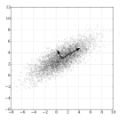In this paper, we consider the statistical inference for several low-rank tensor models. Specifically, in the Tucker low-rank tensor PCA or regression model, provided with any estimates achieving some attainable error rate, we develop the data-driven confidence regions for the singular subspace of the parameter tensor based on the asymptotic distribution of an updated estimate by two-iteration alternating minimization. The asymptotic distributions are established under some essential conditions on the signal-to-noise ratio (in PCA model) or sample size (in regression model). If the parameter tensor is further orthogonally decomposable, we develop the methods and non-asymptotic theory for inference on each individual singular vector. For the rank-one tensor PCA model, we establish the asymptotic distribution for general linear forms of principal components and confidence interval for each entry of the parameter tensor. Finally, numerical simulations are presented to corroborate our theoretical discoveries. In all these models, we observe that different from many matrix/vector settings in existing work, debiasing is not required to establish the asymptotic distribution of estimates or to make statistical inference on low-rank tensors. In fact, due to the widely observed statistical-computational-gap for low-rank tensor estimation, one usually requires stronger conditions than the statistical (or information-theoretic) limit to ensure the computationally feasible estimation is achievable. Surprisingly, such conditions ``incidentally" render a feasible low-rank tensor inference without debiasing.
翻译:在本文中,我们考虑几个低级电压模型的统计推断。 具体地说, 在塔克低级高压五氯苯甲醚或回归模型中, 提供了达到某些可实现误差率的任何估计, 我们根据以两度交替最小化方式对最新估算的无症状分布, 开发了参数振幅单子空间的数据驱动信任区域。 无症状分布是在信号- 噪音比率( 在CPA模型中) 或样本大小( 在回归模型中) 等一些基本条件下建立的。 如果参数 振幅是更进一步或更不相容的, 我们为每个单个单级矢量矢量矢量的推断制定方法和非默认理论。 对于标准振幅的分数模式, 我们为每个输入的参数主元件的一般线性形式和信任间隔设定了无症状分布。 最后, 数字模拟是为了证实我们的理论发现。 在所有这些模型中, 我们观察到, 与当前工作的许多低基质/ 矩阵环境相比, 降低的精确度估算, 通常不需要以非亚值理论理论性理论性理论性理论性理论性推算。




